
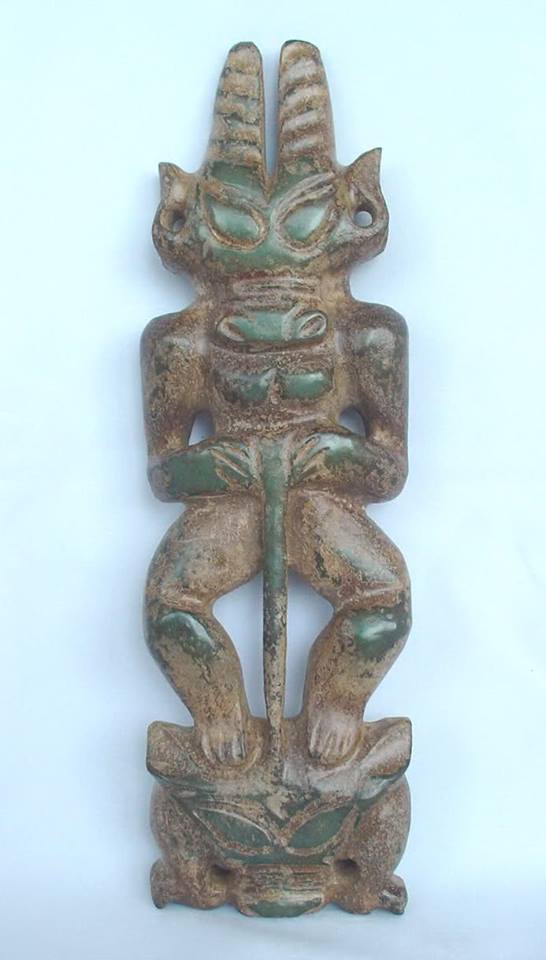



Pre-imperial Chinese artefacts always remind me of native American art. I wonder if there’s a common cultural base? (After all, the land bridge would have been along the way)
I’m not thinking a direct sustained cultural exchange, but rather something like a common cultural ancestor whose presuppositions led to similar artwork much later, in the same ways a lot of artwork has Greece as a common ancestor around the world. Even Hindu culture over in India was influenced by Greeks who made it that far east thanks to Alexander.
There is actually. TL;DR If I understand it correctly, the Hongshan culture is descended from Ancient Northeast Asians (ANA) from that same region in East Asia. Today most closest descendants are Turkic, Mongolic and Tungusic, Nivkh people.
ANA merged with Ancient North Eurasian (ANE) to form the Ancient Paleo-Siberians (APS).
APS are the ancestors of most Native Americans, so Hongshan and Native Americans were pretty closely related as far as genetics go. Still thousands of years apart. But memes can be pretty persistent.
Also possible the Hongshan is descended from Yellow River farmers, which are associated with Sino-Tibetan speakers, most representative are the Han Chinese. Yellow River farmers and ANA seem to trade places a lot in that region.
If you want more detail, I’ve tried to wrap my head around ancient east asian/sibirian/native american people a few weeks ago and scoured wikipedia to make this “brief” summary. Take the maps with a massive grain of salt. I can’t guarantee it’s correct, but it is my best understanding:
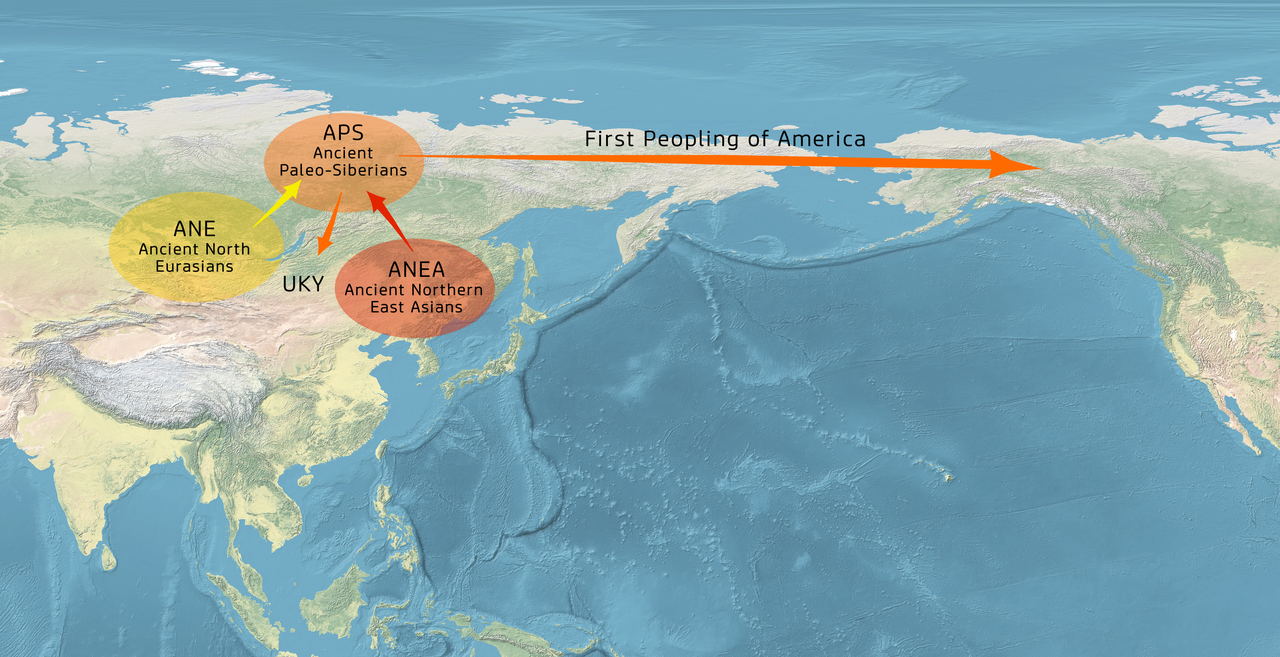
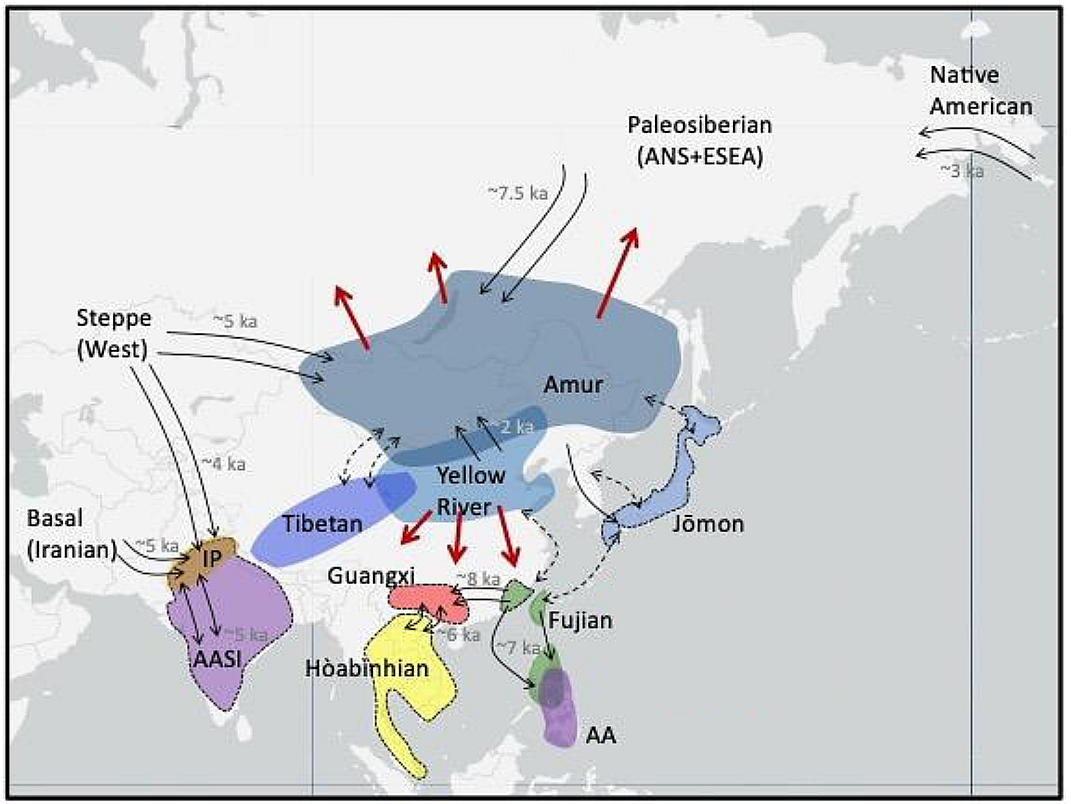
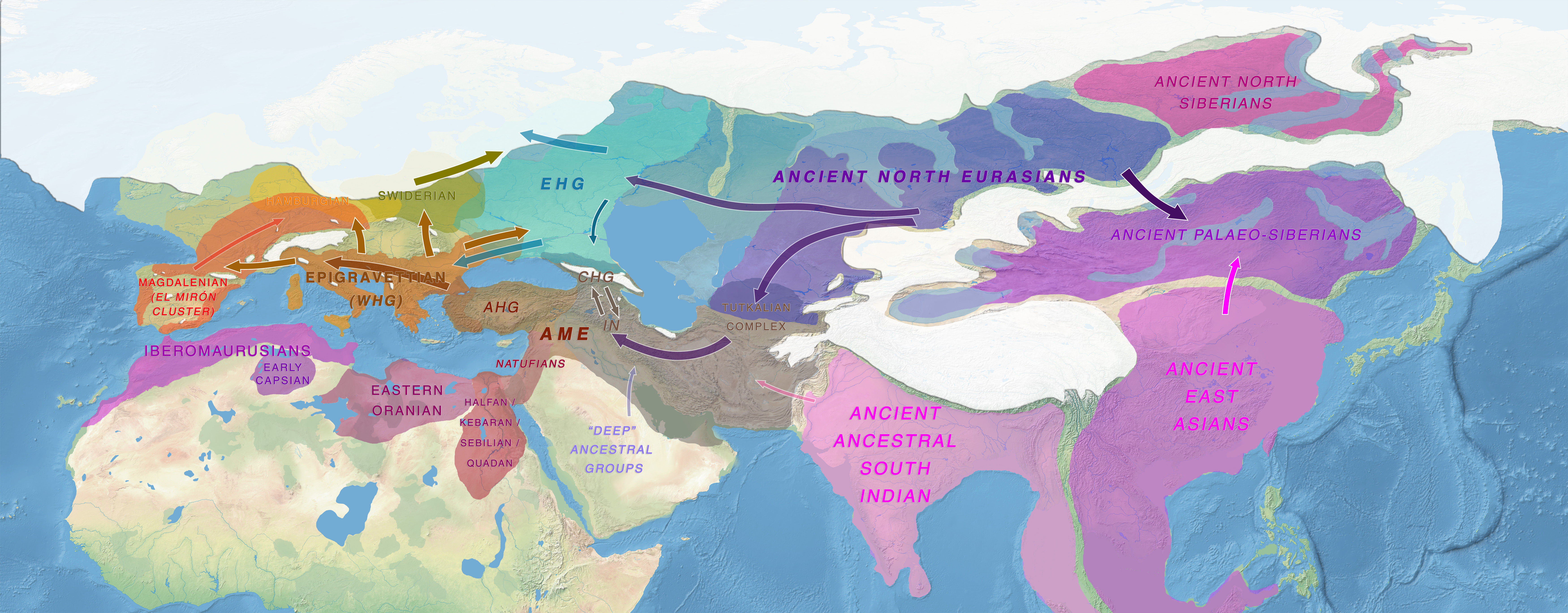
Ancient East Asians
Ancient East Asians split into Ancient Northern East Asian (ANEA) and Ancient Southern East Asians (ASEA) around 20,000 to 26,000 BCe.
ANEA split into broadly three sub-groups, 1) “Ancient Northeast Asians“ (ANA)/Amur Ancestry, 2) the “Neo-Siberians", 3) “Yellow River farmers” . ~19kya to 26kya.
Yellow River farmers
Yellow River farmers are associated with the spread of Sino-Tibetan languages.
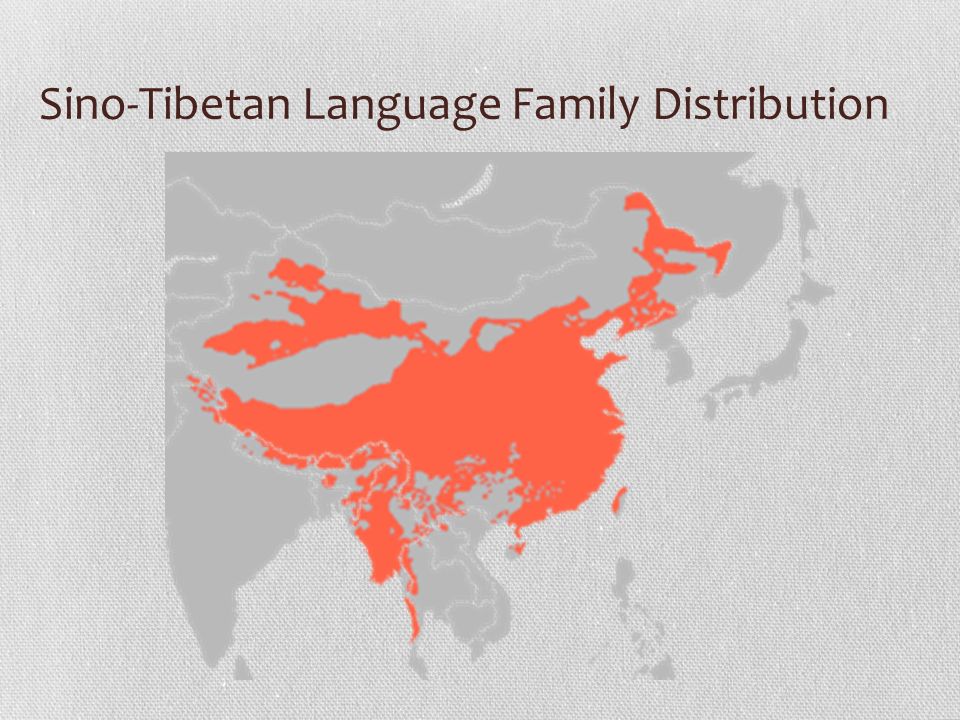
Ancient Northeast Asians (ANA)
Ancient Northeast Asians (ANA) diverged from other East Asian populations some time around 19k to 26k years ago. They are ancestral to hunter-gatherer people of the 7th-4th millennia before present, in far-eastern Siberia, Mongolia and the Baikal regions, but which are most closely related to other ancient northern East Asians.
The Devils_Cave_N sample was found to display genetic continuity with a c. 14kya sample (AR14K) from the Amur region, suggesting that the specific ANA gene pool formed as early as 14,000 BP.[9] Neolithic ANA remains have been found as far as the Altai Mountains, 1,500 km further to the west than previously understood.
ANA is the main ancestry among early and modern Turkic, Mongolic and Tungusic, Nivkh people.
A Hun individual from an elite burial of the mid-4th century CE in Budapest, Hungary, was reconstructed as 60% Ancient Northeast Asian (ANA) and 40% Saka.
The 7-8th century Avars in Europe, particularly as regards the Avar elite, were also confirmed to have essentially Ancient Northeast Asian (ANA) ancestry (c. 90%), with some additions from other sources.
The Turkic princess Ashina (551–582 CE), whose remains were sequenced, was found to be genetically closely associated with Ancient Northeast Asians (ANA) (with 97.7% Northeast Asian ancestry, 2.3% West Eurasian.
Ancient Paleo-Siberians (APS)
Ancient Northeast Asians“ (ANA)/Amur Ancestry mix with Ancient North Eurasians (ANE) to form the Ancient Paleo-Siberians (APS) 20kya to 25kya ago, which led to the emergence of Ancestral Native American from which split the Ancient Beringian (extinct).
Ancient Paleo-Siberians (APS) are closely related to modern far-northeastern Siberia communities, such as the Koryaks, and to Native Americans.
Neo-Siberians
APS were later largely replaced by waves of Neo-Siberians (one of the 4 groups descending from ANEA in East Asia), which may be associated with the spread of Yukaghir and Uralic languages.“Neo-Siberian” ancestry, which is estimated to have expanded from the Northern East Asian region into Siberia about ~11,000 years ago BCe. Uralic speakers arrived in the Baltic region from the East, specifically from Siberia, at the beginning of the Iron Age some 2,500 years ago.
Uralic languages today:

Ancient North Eurasian (ANE)
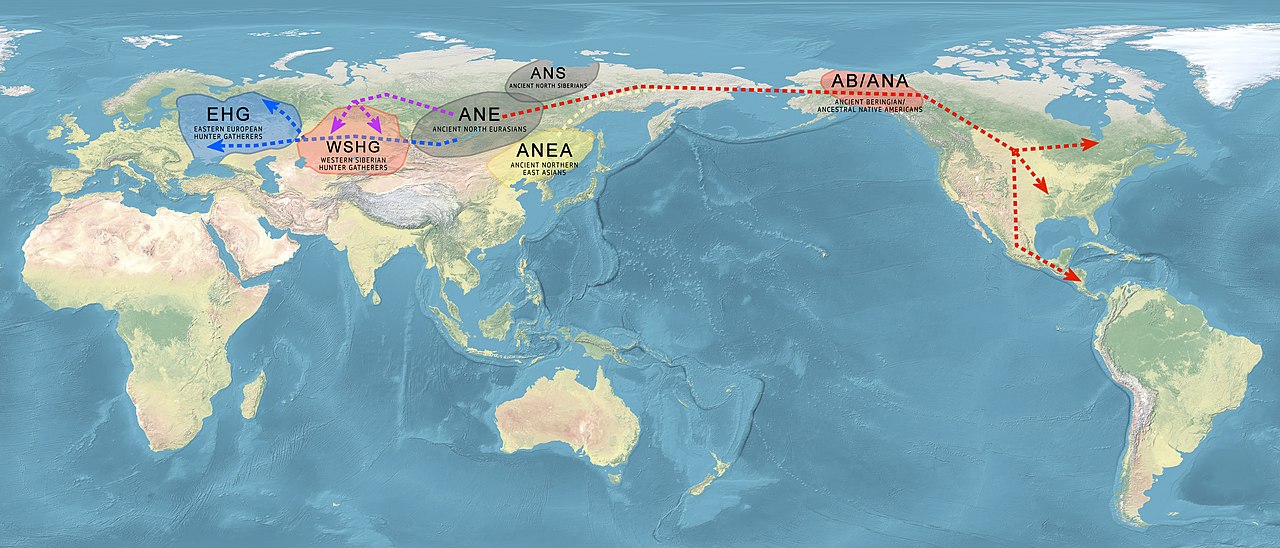
The term Ancient North Eurasian (ANE) is the name given to an ancestral component that represents the lineage of the people of the Mal’ta–Buret’ culture (c. 24,000 BP) and populations closely related to them, such as the Upper Paleolithic individuals from Afontova Gora in Siberia.
ANE are closely related to the Ancient North Siberians (ANS) represented by two ancient specimens from the preceding Yana Culture (c. 32,000 BP).The ANE can either be considered to descent from the earlier ANS population, or that both ANE and ANS are closely related, albeit differentiated, sister lineages, which both originated from a merger of ‘Early West Eurasian’ hunter-gatherers (represented by Kostenki-14, c. 40,000 BP),[8] and an ‘Early East Eurasian’ population.
More than half of the world’s population today derives between 5 and 40% of their genomes from the Ancient North Eurasians.
Significant ANE ancestry can be found in Native Americans, as well as in regions of Northern Europe, South Asia, Central Asia, and Siberia.
By c. 32kya, populations carrying ANE-related ancestry were probably widely distributed across northeast Eurasia.
The global maximum of ANE ancestry occurs in modern-day Kets, Mansi, Native Americans, and Selkups.
The Tarim mummies (c. 2000 BCE) had high levels of Ancient North Eurasian ancestry (c. 72%), with a smaller admixture from an Ancient Northeast Asian-like population (particularly the Baikal_EBA, at c. 28%), but no detectable Western Steppe Herder-related ancestry.
14k-9k years ago, Eastern Hunter Gatherer (EHG) genetic profile is mainly derived from 70% Ancient North Eurasian (ANE) ancestry, which was introduced from Siberia, with a secondary and smaller 30% admixture of European Western Hunter-Gatherers (WHG from Europe c. 15,000~5,000 BP)
Caucasus hunter-gatherer (CHG)/ Satsurblia cluster split from WHG around 45-26,000 years ago.
Western Steppe Herders (WSH)/Yamnaya ancestry is a merger around 5th-4th millennium BC between Eastern Hunter-Gatherers (EHG) and Caucasus Hunter-Gatherers (CHG).
~5000 years ago WSH embark on massive expansion across Eurasia, spreading Indo-European languages, even into modern Western China, e.g. Sakas, Tocharians, possibly Yuezhi.
I’m going to slowly work my way through all this! Thanks so much!

